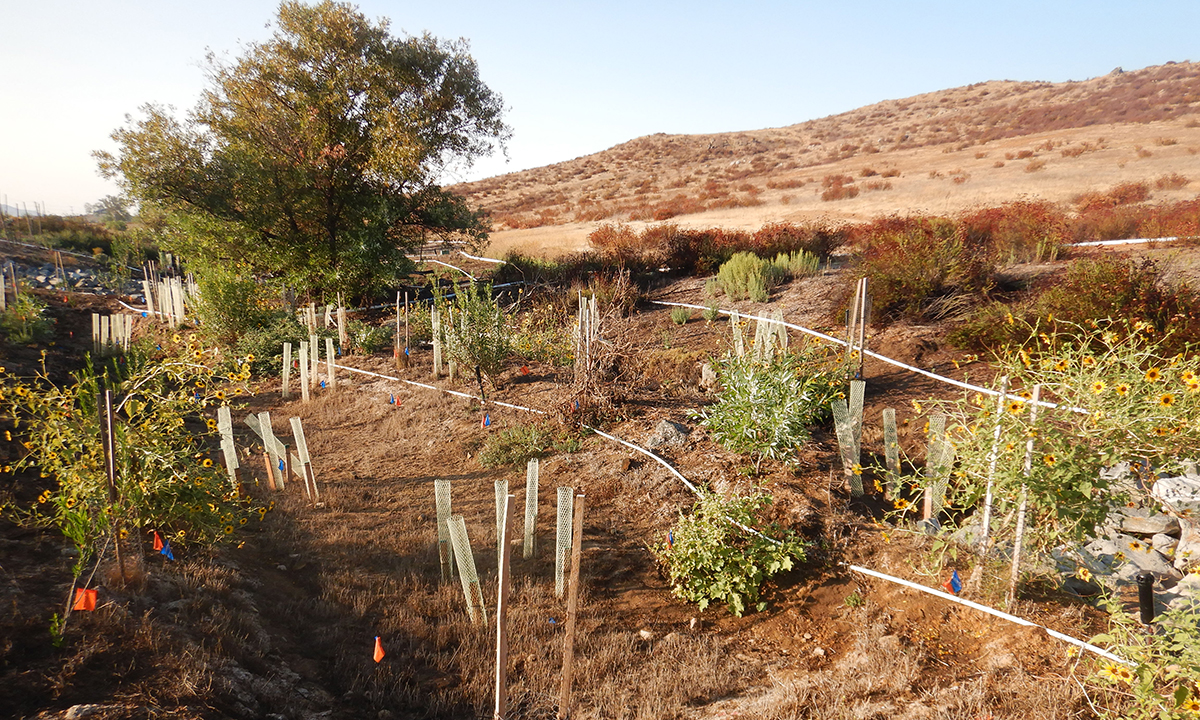Riverside County Transportation Department Integrated Mitigation Project
Riverside County, California
Riverside County is the fourth largest county in California in terms of total land area, with a growing population of 2.3 million people. Within the county lies approximately 75 acres of Diegan Coastal Sage Scrub and forbland habitat, adjacent to five separate roadway improvement projects: Clinton Keith Road Extension, State Route 79 Widening, Interstate 15/Clinton Keith Road Interchange projects and State Route 371 Shoulder Widening. The Riverside County Transportation Department (RCTD) Integrated Mitigation Project addressed the off-site mitigation requirements for this combined project area and focused on the restoration of a degraded, intermittent creek prone to flooding during the wet season. Through the project design, additional intermittent channels and seasonal wetlands were created to regulate flows within the project site. This notably marked the first mitigation project for wetlands and waters led by RCTD. Michael Baker International provided environmental and design services for the RCTD Integrated Mitigation Project.
The RCTD Integrated Mitigation Project site incorporated six different habitat types, including Western sycamore scrub, Southern willow scrub, saltgrass meadow, native grassland, mixed oak woodland and coast live oak woodland, in an area that had lost its native vegetation through historical farming practices and a wildfire in 2012. With land use changes occurring upstream of the project site, additional flood flow waters have been introduced to the channel, resulting in the location and surrounding road often being flooded, making local trails inaccessible to the public. The site was also in an area that was being preserved by numerous conservancy groups, adding in the complexity of coordinating among the different firms and stakeholders.
To address the issues, Michael Baker performed extensive coordination efforts, working with stakeholders and providing an environmental awareness program to educate the contractor’s employees about the site. The team removed invasive species and created connections throughout the watershed to encourage downstream effects. Existing native habitat was preserved and incorporated into the project design to promote the recovery of the remnant areas. Finally, the firm designed additional drainage by analyzing the topography of the area and developing a channel that meandered along natural contours. This captured more water than the previous drainage design and after the 120-day survival monitoring period for plant life, showed significant ponding despite ongoing drought conditions. Michael Baker worked with the client to maintain the budget and delivered the project on time.
Impact
“This project yielded benefits to both the community and the environment, enhancing the surrounding watershed and residents’ quality of life through flood safety and public health. By reconnecting habitat areas, Michael Baker created connections throughout the watershed that will benefit the local wildlife and improve downstream water quality for years to come.”
Anisha M.
Project Manager


